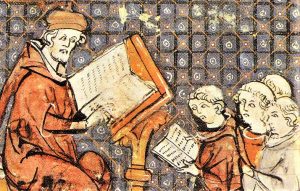A chapter or so into Dennett’s book, I came to believe that part of his project is to show why naturalism is a necessary foundation for evolution. Dr. Andrew Jeffrey helped me to rethink this a bit. It’s fairly clear that Dennett’s goals for his book aren’t to prove anything with regards to the necessity of naturalism as a ground for evolution. All he needs to be successful with his argument is to show that the diversity and complexity of life on earth does not require Mind. Of course, this is a far cry from proving that naturalism is true or even possibly true but that’s not Dennett’s goal. Darwin’s dangerous idea just is that the diversity of life on earth doesn’t require Mind and therefore Mind is not a necessary condition for this diversity. This doesn’t demonstrate that naturalism is true. But it does (if the idea goes through) undermine design-type arguments.
All he really needs to show is why naturalism is a sufficient condition not a necessary one. More precisely, naturalism is sufficient to account for the diversity of biological life on this planet. If naturalism is sufficient, Mind is not necessary. This is an important distinction and I appreciate Andrew pointing it out.
In Chapter 4, Dennett explores the idea that the enormous diversity of life is possible from a very simple set of initial components and algorithms in an entirely natural environment (i.e. one that does not have entities being created ex nihilo along the way by Mind). In this chapter, Dennett anticipates a possible objection along these lines. While a chance-driven, algorithmic, mindless process may be able to account for variation in a species given a rich set of initial conditions within a species, it won’t be able to support (explanatorily) the existence of the rich diversity we encounter on planet earth particularly given the extremely modest initial conditions Darwin’s model claims to have existed out of which all life arose. Further, it also needs to be explained why our world had just the right set of initial conditions to allow the diversity of life to arise in the first place.
In order to answer this challenge, Dennett first expands a straightforward notion of possibility into 4 separate ways possibility could be understood. Leveraging this richer notion of possibility, he then attempts to show how the extensive diversity on this planet is possible on naturalism. Overall, his treatment is helpful and he offers some very rich ideas to support his response. He is attempting to continue to break down what he sees as an entrenched adherence to essentialism of one sort or another and provide a non-essentialist case for diversity through possibility. His theoretical case seems coherent enough. His practical case, though, seems to rest on some critical metaphysics he introduces and I’m not sure he does enough to support that idea.
Four Types of Possibility
Dennett lays the groundwork for this chapter by establishing four definitions of possibility that go generally as follows.
1. logical possibility – “a matter of being describable without contradiction.” (104) E.g. Superman flying faster than the speed of light is logically possible while light flying faster than the speed of light isn’t.
2. physical possibility – being consistent with the laws of physics. E.g. Superman flying faster than the speed of light is physically impossible.
3. biological possibility – a subset of physical possibility; what biology can support in living things. E.g. Flying horses are logically and physically possible. They might also be biologically possible if we consider “the strength of the bones, and the payload requirements” as well as “weight-strength ratios, the density of air and so forth.” (105) I think the idea here is that on biological possibility we actually do an analysis of what biology can possibly support as far as life is concerned and whatever that yields is biological possibility.
4. historical possibility – what might have been possible or impossible in the past but no longer is. Dennett seems to want to constrain historical possibility to biological entities only though, based on his taxonomy, he could expand it to anything.
He further expands on biological possibility by noting that there are two types of biological impossibility: (1) “violation of a biological law of nature (if there are any)” and (2) “‘mere’ biohistorical consignment to oblivion.” (106). His purpose in establishing these types of possibility is to explore how, on Darwin’s dangerous idea, biology can explain what is possible as far as a viable life form on earth and why some biological combinations are possible in this sense but, apparently, many more are not.
Again I expect that he needs to explore this because on a top-down approach, essences cut nature at the joints: whatever is actual is possible simply because the essence defines viable life and if there is no essence for a thing, the thing isn’t possible. If Darwin got rid of essence talk, his model has to explain why some biological combinations are viable and are selected and others aren’t. In other words, how, without essences, can one construct an explanatory model for what might be possible with regards to viable living organisms particularly when there are “vastly more ways of being dead” than alive as Dawkins observed? The prima facie evidence seems to support essentialism. Dennett’s goal in this chapter is to provide a philosophical “way out.”
Numbers–Big Ones
Dennett’s answer to the problem appears to be centered around the idea that the biological possibility space is potentially extremely large particularly given what we know about genes. In this large possibility space, some entities will hit upon the right sort of combination that matches with the specific life-permitting environment on earth and, as a result, survive. Everything else will not. So it’s not a matter of there being a small number of possibilities for the combinations in which life could take shape (essentialism). Rather, the possibilities are enormous and given the sheer size of the possible combinations, some survive even though most don’t.
A few years ago, I purchased a Rubik’s Cube puzzle in an attempt to beat a challenge that beat me as a kid. No matter how hard I tried, as a young boy I found myself again and again taking the puzzle apart and putting the 6 sided cube back together with all the colors in the “right” places. I couldn’t seem to figure out how to solve the puzzle by moving the individual color blocks to the right locations by twisting and turning the parts of the puzzle appropriately. So I decided it was time to try again. In the little booklet that came with my 25 Year Anniversary Edition cube, I read an astonishing fact: there are 43 quintillion combinations for the puzzle (specifically, there are 43,252,003,274,489,856,000 possible configurations into which the cube could be contorted). In that mind-boggling array of possibilities, some configurations will yield the red side “solved” while the yellow, green, blue, white, and orange sides are completely jumbled. Some combinations will yield the green and blue sides “solved” with the other colors jumbled. But only one combination will yield a completely solved puzzle.
While only some combinations yield positive results, there are trillions that don’t. In one sense, positive results (where such results are those that yield a side of the puzzle with 9 square panels made up of a single color) are a small possible percentage of what is both possible and what ends up being actual with regards to the cube. I did end up solving the puzzle but did not “actualize” all 43 quintillion possible combinations–not even close. Still those combinations were possible but only some of them were actualized and only a subset of those actualized yielded any positive results. I think something along these lines is what Dennett has in mind in his discussion. Though there are lots of possibilities, only a small subset will yield life but it is the sheer number of possibilities that help explain how viable life formed on earth. Essences aren’t needed (whether the Rubik’s Cube has an “essence” I’ll leave as an open question).
In order to set the foundation for his idea, he leverages what he calls an “anchoring vision” which he’ll use as a harness for capturing what he has in mind. This anchor is a fictional library conceived by poet Jorge Luis Borges. I won’t go into the details of Dennett’s description of Borges’ idea but I’ll try to capture the essence of what he’s after for the purpose of setting up Dennett’s treatment of possibility in evolution. I encourage the reader to consult Dennett or Borges directly for a fuller description
The Libraries of Babel and Mendel
The library Borges envisions contains all possible books (with some qualifications since the books in this library are only those which could be written in “English and other European languages, plus the blank and punctuation marks” (108)) which, according to Dennett’s calculations, contains 100^1,000,000 books. In order to qualify as a book, the volume need not contain character strings that actually make sense in English. A “book” in this library might contain entirely blank spaces or strings of random characters. So a better way to think of the library is that it contains all the books that consist of all the possible combinations of 100 different characters plus spaces and punctuation. Obviously, most of the books in the library do not contain grammatically structured strings and the chance of finding such a book if dropped in the middle of this library is “very-much-more-than-astronomically” small (a concept he baptizes with the term “vast”).
With this idea before his reader, Dennett then modifies it and considers another library called “The Library of Mendel.” This library consists of all possible genomes or DNA sequences where the code for describing these sequences consist of the four characters A,C,G & T which represent the proteins Adenine, Cytosine, Guanine, and Thymine. Dennett leaves open the possibility that there may have been and still yet might be other proteins that could be added to this list that would change the scope of “all possible genomes.” Just as an enormous number of books in the Library of Babel were meaningless, random strings of characters, so too, the tremendous amount of the sequences of genes in the Library of Mendel are “meaningless” in the sense that they would not result in a “viable organism” (113). Given this picture, then, what is the relationship between the near infinite possibility of organization of these genes and a viable organism?
Postponing Three Complexities
Before answering this question, Dennett acknowledges 3 complexities that he wants to “keep an eye on as we proceed, even if we are once again postponing their full discussion.” (113)
1. The reading of the recipe. The idea here is that a book or a sequence of DNA alone is not sufficient for a “sensical” collection. Books without readers are just as meaningless as “pages smeared with jam.” Similarly, DNA sequences themselves “don’t specify anything at all–not blue eyes or wings or anything else.” (113). DNA too needs a “reader-constructor” which is a “chemical microenvironment as well as the surrounding support conditions” that make something meaningful (viable) out of the sequences. Dennett goes on to say that this reading-constructing process, “is only partly controlled by the DNA, which in effect presupposes (and hence does not itself specify) the reader and the reading process….We might say that every species that has ever existed on this planet has had its own dialect of DNA-reader.” (114)
The idea then is that the combinations of DNA need to be interpreted by these readers in order to form a viable organism. Further, though the readers for the various species are uniform in principle, each species needs its own specific reader (one can’t, after all, create an eagle using eagle DNA and a human DNA reader–though see below for a possible spoiler to this). Here, a couple of questions immediately come to mind.
First, does this combination of DNA “information” and reader imply a tight, necessary relationship between the two and as such beg of essence or essence like entities? If part of the work of essences is to define boundaries across which information like DNA cannot pass and if given sequences of DNA need specific readers (Dennett mentions, for example, a dinosaur-DNA-reader), doesn’t this seem to imply a natural boundary? I’d expect Dennett’s answer to be that the readers evolved along with the DNA, obviously, but how would this have worked? If the DNA is useless without the reader and the reader is not necessarily physically associated with the DNA sequence, how were the two formed in such a way that there is this apparent dependency. I expect this difficulty is why Dennett lists this item under one of his “complexities” that he’ll need to address later.
Second, ostensibly, though the Library of Babel doesn’t and couldn’t exist, the Library of Mendel does and we’re smack in the middle of it. As such, is there physical evidence for all these useless genomes that have no readers or readers for which the DNA sequences no longer exist? Ostensibly, the way out here would be to say that such sequences have “no shelf life” because they were unviable and as such, went extinct as soon as they came into being. Dennett acknowledges that we’re “starting in the middle” in that we’re dealing with life currently on this earth and extrapolating out. He also says that any combination “could be constructed, in principle, in the gene splicing laboratory, and, once constructed, would have an indefinite shelf life, like a book in a library. But not every such sequence in the Library of Mendel corresponds to a viable organism. Most DNA sequences–the Vast majority–are surely gibberish, recipes for nothing living at all.” (112-113). So validating the Library of Mendel based on physical evidence seems to be near impossible since any non-viable combination wouldn’t last beyond a single generation or never be created even though it would still be possible.
2. Viability. The second complexity Dennett acknowledges is that “viability is relative to the environment in which the organism must make its living” (115). This is a complexity because environments are continually undergoing change and most currently viable organisms live in a tight dependency with other living organisms. So a viable organism does not just need DNA with a corresponding “reader-constructor” but also needs a complex environment in which these components can do their work. Again, Dennett chooses to “join Darwin in starting in the middle, with currently existing environments, and extrapolate cautiously to earlier and later possibilities.” (116).
3. “The third complexity concerns the relationship between the texts of the genomes that do determine viable organisms, and the features those organisms exhibit.” (116) The general idea here has to do with the specific information contained in a genetic sequence and how that sequence is read and further exhibited by and in an organism. “When this complication is acknowledged, it is usually pointed out that genomes are not like descriptions or blueprints of finished products, but more like recipes for building them.” (116). Part of the problem then is that specific genes appear to be tightly bound to their readers. Genes don’t appear to be generic building blocks that can be mixed and matched across organisms.
Still, Dennett cautions that, “Proving that there is no straightforward way for biology to accomplish some trick is never a proof of impossibility.” (117) He asks, “What could be impossible about a giraffe with green stripes? Zebras have stripes, drakes have green feathers on their heads–there is nothing biologically impossible about the properties in isolation, and surely they can be put together in one giraffe! So you’d think. But don’t count on it. You’d probably also think that a striped animal with a spotted tail was possible, but it may well not be.” Still, given that we haven’t been able to determine whether or not genes work this way, doesn’t prove that they can’t.
(Not surprisingly, experiments are now being done using stem cells that attempt to “mix and match” parts between species and have been met with some success. An article a few years ago on MSNBC wrote, “Scientists create animals that are part-human” [sic] describes sheep with “partially human livers, hearts, brains, and other organs.” What’s most interesting about the article isn’t the research it describes but the way it describes it. If a heart was developed in a sheep using human cells, the Associated Press is calling this a “human” heart. I ask in what sense is it ‘human’? Still the idea that parts could be developed across species is an interesting one. Given my ignorance of the genetics behind these experiments, I’m not sure how this relates to Dennett’s complexity here. There are and will be many more of these types of stories coming for 
sure. John Brockman’s intriguing The Next Fifty Years: Science in the First Half of the Twenty First Century contains more than a few references to ‘chimeras’ such as the ones mentioned in the article. If such entities can be formed–that is DNA can be taken from a duck and placed in a human DNA reader, some of Dennett’s worries are mitigated and the essences claim may have something to contend with. Of course the other way to think about it is that it is the “reader” that is important for the essences question and the DNA that’s being read are just a set of instructions. So when duck DNA is being read by a human reader-constructor, the resulting part, feature, entity, is truly human with no “duck parts.” This is how I’m inclined to think about it which calls into question the role of genes in the evolutionary process. For another article on this, see http://www.newscientist.com/channel/sex/dn7560)
Still it seems to me that the prima facie case supports a more essentialist understanding of organisms since the physical evidence is more consistent with such a model and Dennett leaves this as a promissory note. If Dennett’s goal is to provide a naturalistic model for how it might work, he hasn’t done so thus far.
Possibility Naturalized
In the last section of this chapter, Dennett gets to the meat of his presentation and gives us the most original proposal of the chapter. In this section, he attempts to tackle the heart of the question of possibility on a naturalistic framework (more specifically, on the Darwinian model). Since, in the Mendelian Library space, it’s much easier to instantiate genomes that won’t lead to viable life than it would be to run across genomes that will, how do we explain the relative success of all the diversity we find in the world today? What allows for these mathematically improbable life forms to be instantiated in our world? First, Dennett gives us a definition of biological possibility:
x is biologically possible if and only if x is an instantiation of an accessible genome or a feature of its phenotypic products. (118)
At first blush, it’s hard to see how Dennett is going to avoid actualism on this definition since it appears to be saying that biological possibility is defined in terms of what is actually instantiated. In fact he says that determining the “wheres” and “whats” of what is possible is difficult and so we must start from “the middle,” namely, where we are today. “We count as possible all actual contemporary species and all their features–including the features they have in virtue of their relations with other species and their features–plus anything that can be obtained by traveling from that broad front either just ‘in the course of nature’–without human manipulation–or with the help of such artificial cranes as the techniques of traditional animal-breeding.” (118, emphasis in the original)
The idea, I think, is that we start where we are in history and work back and forward in a relatively constrained portion of the library (one where the laws of physics and chemistry are stable or “clamped” in his terminology) and what we find is that we are in a portion of the library that produces a number of viable life forms. It’s like being in a portion (or a stack or row) of the Library of Babel that has millions of volumes of Moby Dick but only one of them is the Moby Dick we know and as you move in either direction of that volume, the less similar to Moby Dick they become.
He then supposes that physics and chemistry are clamped not only for our limited view of history but for any starting point we might choose relative to modern history. So this demands that we stay in the relatively small confines of this Mendelian stack even though the period of years might be dramatic. In this broader space, with the same laws of physics and chemistry as ours, we can then say that any genome that could be actualized would be possible since any genome in this physical design space would be stable. “With hindsight, we can say that tigers were in fact possible all along, if distant and extremely improbable.” (119) What he does then, is exchange the idea of unrestrained possibility (as it might be used in terms of the probability of finding any volume whatever in the Library of Mendel or Babel) with “claims about relative distance” (the probability of finding a given volume in a certain stack or row of the library).
Thus he avoids actualism (the other genomes in the Library of Mendel are still possible) but he doesn’t have to explain why we landed in this row of the library. We just know we did as there are viable living things on this planet now and we just work backward and forward in this design space (this library stack if you will) to see what else is possible and actual relative to this starting point. And with physics and chemistry clamped, that keeps us in this stack so we can go back as far as the Darwinian theory says we have to without ever leaving this possibility space.
He acknowledges that this is not a definition that a lot of philosophers will be satisfied with. “The idea that some things might be ‘more possible’ than others (or more possible from here than from over there) is at odds with one standard understanding of the term …” (119) Dennett’s response? “If this is not an account of possibility, so be it. It is, then, a proposed replacement for a definition of possibility.” (120)
Problems Solved?
So the goal as I understand it is to explain how, given the Vast scope of what could be considered possible for the way things could have developed on earth, we ended up with a world with just the scope of genomes that we currently have that allows for an incredibly diverse set of viable life on this planet. Without an intelligence or guiding hand to constrain things, anything was possible. Yet this world landed in just the right spot in the Library of Mendel to give rise to a whole slew of viable life forms by enabling life-permitting genomes to be instantiated. Given Dennett’s model, there are, perhaps, lots of other places in the library that could also have produced viable life forms albeit some similar others radically different than the ones in our biosphere. But Dennett is interested in explaining why this biosphere and not others.
Dennett’s solution is to constrain the Vast possibility space by affirming something obvious: there is a whole set of genomes that produce viable life forms–just look around. So we don’t need to really worry about why this part of the library or that. We just acknowledge what is clear and plain and work within those constraints. If this is in fact what he concludes, we can safely say he begs off on the first part of the question. Perhaps it’s a non-starter for him: viable life has been realized on this planet so let’s not concern ourselves with these more cosmological questions as to why.
With that out of the way, he handles the secondary question–how diversity and complexity of life can arise out of a very limited set of initial “instructions–by clamping physics and chemistry and claiming that once we’re in the right “stack” in the library, anything becomes possible because “if [nonactual genomes] were formed, they’d be stable.” (121). Whether they are formed is a confluence of chance events within that design space. But given enough time and enough events, the frequency of genomes sequences being copied, modified, recopied, modified, etc. and forming these stable genomes is high thus increasing the chance for diverse life on earth. The hard part is getting to the right stack in the library. Once there though, anything is possible in that constrained design space.
According to Dennett, he’s given us “a framework for describing large and important classes of regularity we discover in the patterns of our biosphere.” (123). This is an explanatory framework and provides us with a way to think about how complexity, diversity, as well as regularity can exist in an unguided biological development process. But it seems to me that the complexities Dennett acknowledges in this chapter are significant and he would need to address those complexities if his framework is to have the degree of explanatory power it would need to support an overall philosophy of naturalistic evolution. For example one could tell the same story using not biological algorithms but using silicon-based computers and the algorithms they operate against. One could tell a story about “The Library of Turing” and how there is a vast design space of possible computer algorithms that describe the range of possible programs that could be written and talk about the possibility of modern, complex programs given the existence of simple ones with a specific structure long ago and on and on.
But the story doesn’t work not because we know the history of how computers developed or because it’s internally inconsistent. It doesn’t work because the story, like Dennett’s, lacks an active component that organizes and “reads” the algorithms and explains how the algorithms actually self-propagate, create new hardware, develop (positive) mutations that are then copied to future generations etc. In short, it lacks an active power that does the work in the model.
Setting that aside we can suppose that Dennett’s is a cumulative case and this is just one block in the overall structure. Assuming he can address the complexities he notes in this chapter and the ones I just mentioned, is his framework at this stage enough to support the case he’s trying to build? In other words, is there enough here evidentially and metaphysically to explanatorily adequate to use this as a foundation for whatever else he’s going to present?


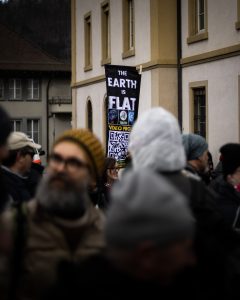
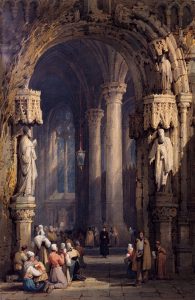
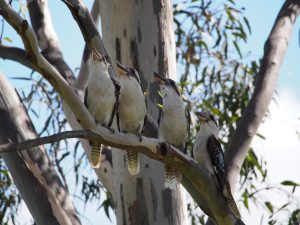
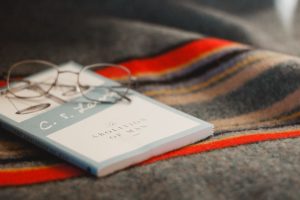


:max_bytes(150000):strip_icc()/what-is-wrong-with-my-stomach-4138111-5c454a7cc9e77c0001b21d85.png)
